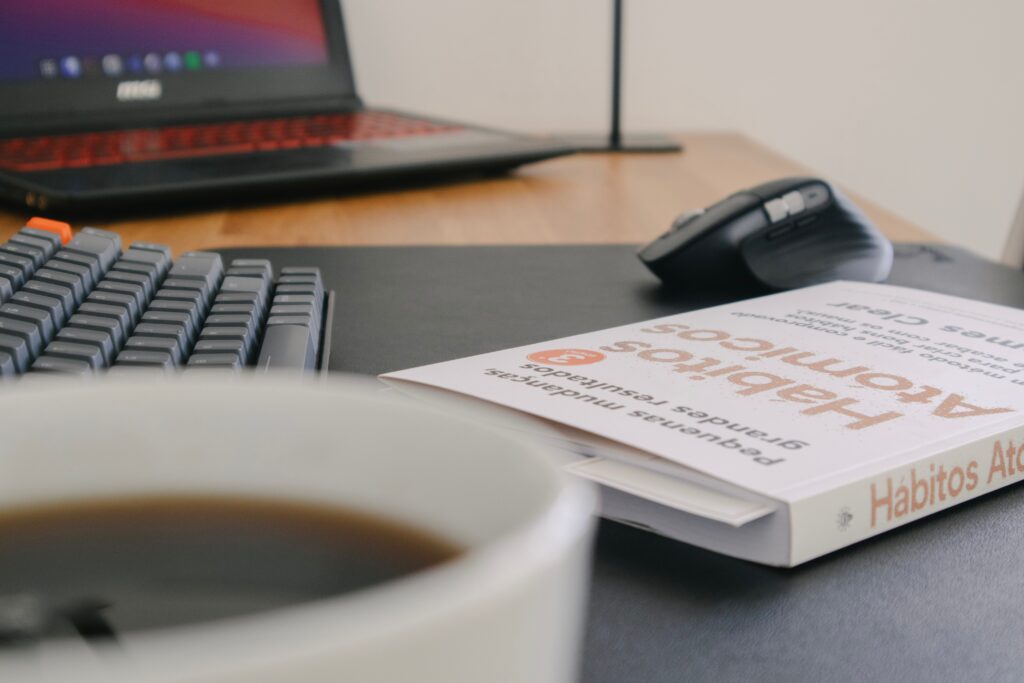Building new habits can be challenging. It’s easy to set goals and make resolutions, but following through with them consistently is another story. You might start off strong, but soon find yourself falling back into old patterns. That’s where the concept of friction comes into play.
In his book Atomic Habits, author James Clear explains the power of friction in building better habits. Friction refers to the barriers or obstacles that make it difficult to perform a certain action. By reducing the friction associated with good habits and increasing the friction associated with bad ones, we can make it easier to follow through with positive behaviors and more challenging to engage in negative ones.
Let’s take a closer look at how friction can help us build better habits.
Reducing Friction for Good Habits
Reducing friction can be an effective way to make positive changes in our lives. When it’s easy to do something, we’re more likely to do it consistently. Take the example of stretching in the morning, which we talked about in the previous newsletter. If you leave your yoga mat rolled up in the closet, it might take too much effort to find it and start your stretching routine. However, if you leave your mat unrolled next to your bed, it becomes an easy and visible reminder to stretch first thing in the morning.
Another example of reducing friction for good habits could be preparing healthy meals. If you keep healthy snacks and ingredients visible in your kitchen, you’re more likely to choose them over unhealthy options. By doing some meal prep at the start of the week, you can make it easier to prepare nutritious meals throughout the week. By making good habits more accessible and reducing barriers, you’ll be more likely to follow through with them consistently.
Increasing Friction for Bad Habits
On the flip side, increasing friction can help us break bad habits. The more challenging it is to engage in a negative behavior, the less likely we are to do it. Let’s say you have a habit of snacking on unhealthy foods while watching TV. One way to increase friction and reduce this habit is to make the unhealthy snacks less accessible. This could mean not buying them at the grocery store or keeping them in a less convenient location, such as in a cabinet or pantry. By doing so, you’ll create a barrier that makes it more difficult to engage in this negative behavior.
Another example could be reducing screen time before bed. If you have a habit of scrolling through social media on your phone before going to sleep, the blue light from your device might be affecting your sleep quality. One way to increase friction and break this habit is to charge your phone outside of your bedroom. This will make it less accessible and create a barrier between you and the negative behavior.
What I implemented
One area where I found the concept of reducing friction particularly helpful is with stretching. As a personal trainer, I’ve always wanted to improve my flexibility and encourage my clients to do the same. However, like many others, I struggled to make stretching a consistent habit. I would often forget or put it off, and when I did remember, I found it difficult to motivate myself to get started.
That’s when I decided to try reducing the friction associated with stretching by implementing some of the strategies outlined in Atomic Habits. I started by leaving a yoga mat on the floor next to my desk. This way, every morning when I start working, I would see the yoga mat and it would serve as a reminder to do some stretches. By having a visible cue in my environment, I was able to reduce the amount of friction associated with stretching and make it far easier to follow through with the habit.
Similarly, another area where I’ve found reducing friction to be helpful is with taking my supplements in the morning. I was struggling to remember to take my daily supplements because I didn’t have a good cue in my environment to remind me. But after reading Atomic Habits, I decided to keep them next to my protein shake, which is already part of my morning routine. By having a visible cue and reducing the amount of friction associated with taking my supplements, I was able to make it a consistent part of my morning routine.
The examples I provided are just a few ways that I’ve been able to implement the concept of reducing friction in my own life, but there are countless others. The key is to identify areas where you can reduce the amount of friction associated with good behaviors and increase the amount of friction associated with bad ones.
In conclusion, the concept of reducing friction is a powerful tool for building better habits and breaking bad ones. By making it easier to perform good behaviors and harder to perform bad ones, we increase the likelihood that we will follow through with our intentions and achieve our goals. Whether it’s leaving your workout clothes out the night before, keeping healthy snacks within reach, or setting a reminder on your phone, there are countless ways to reduce friction and make positive changes in your life. So, start small, experiment with different strategies, and see what works for you. The more you can reduce friction and increase consistency, the more likely you are to succeed in building the habits that will help you achieve your goals.
Conclusion
Friction is a powerful tool that can help us build better habits and break bad ones. By reducing the friction associated with positive behaviors and increasing it for negative ones, we can create a more conducive environment for habit-building. Remember, building new habits takes time and effort, but by reducing barriers and creating helpful environmental cues, you can set yourself up for success.
